I was recently inspired by the sale of a painting by local artist Ben Steele. The piece depicted the Spiral Jetty, Robert Smithson’s land art installation in the Great Salt Lake, as an inn located somewhere in the vastness of the salt flats. While the piece hung in the gallery I had many opportunities to tell the story of the Spiral Jetty to interested clients, I was surprised at how many Utahns had not heard of the installation.
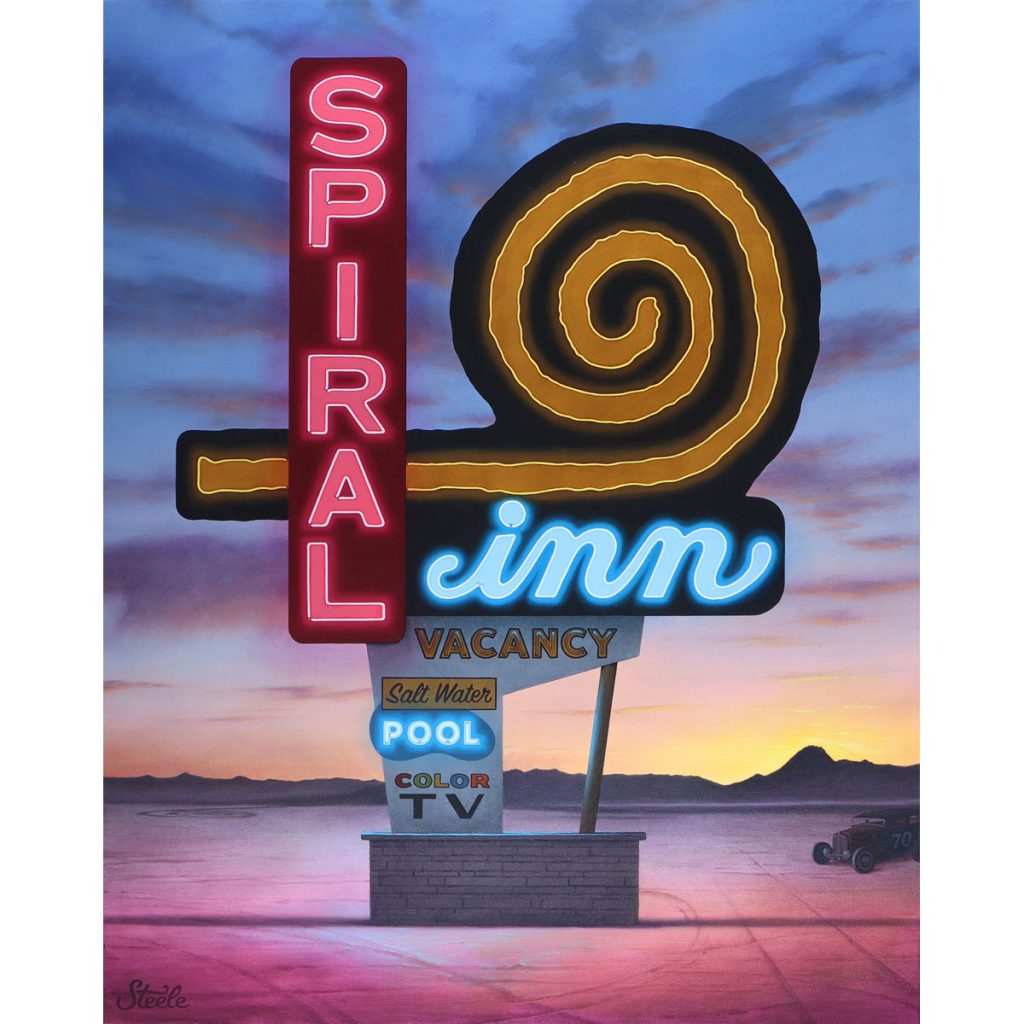
Smithson’s early work consisted mainly of paintings and collage. In the early 1970’s he took his work outdoors and dubbed it “Earthwork” or “Land Art”. He was extremely interested in geology, especially the forces of entropy on the natural world. Smithson’s work was meant to have a finite life span in comparison with so many artists who hoped their work would be eternal.
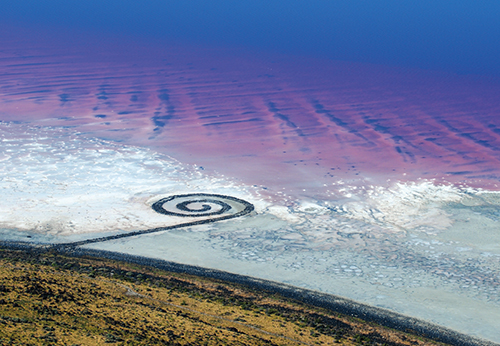
Smithson looked long and hard for the right place to construct the Spiral Jetty. The fluctuation of the lake was a determining factor but even more so was the red color of the water which is caused by algae and bacteria that thrive under the lake’s 27% salinity.
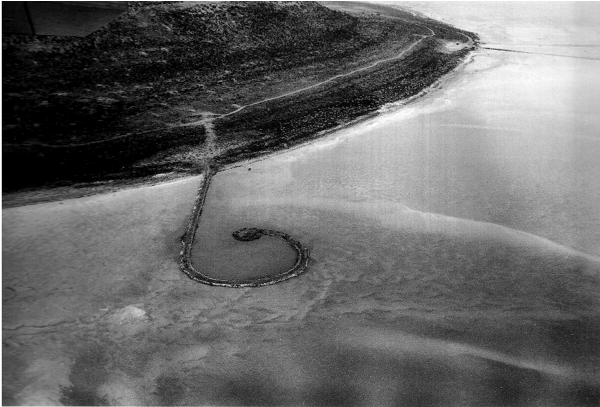
With the help of a reluctant local contractor, Smithson displaced some 6,000 tons of black basalt rock and earth from the adjacent shore to form a coil 1,500 feet long and approximately 15 feet wide, winding counterclockwise into the lake.
The image above was the first iteration of the Jetty, more like a spiral hook. It was constructed in just six days but after a few days of contemplation, Smithson brought the crew back to the site. The second and last phase of the project involved moving around 7,000 tons of basalt rock and took an additional three days.
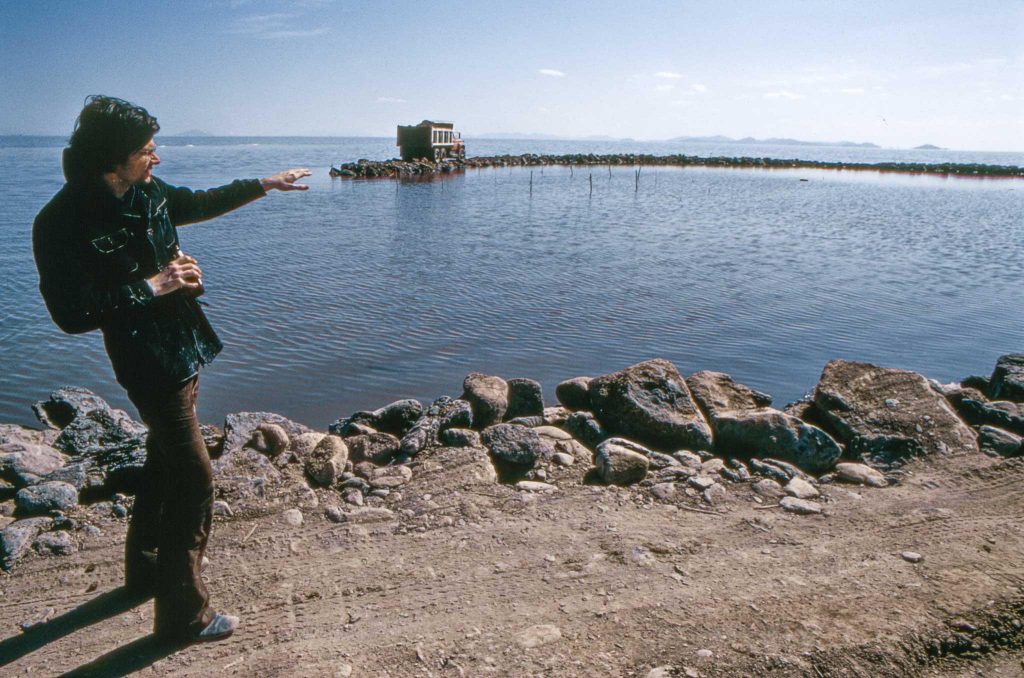
The Spiral Jetty is only visible when the water level is below about 4195 feet. It was submerged soon after its creation and stayed underwater for 30 years.
Due to drought, it has been dry since 2002. Until the Great Salt Lake rises significantly, the jetty will probably be visible for years to come.
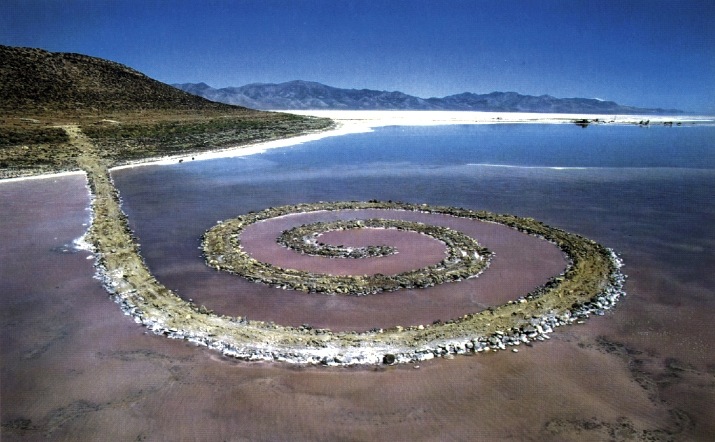
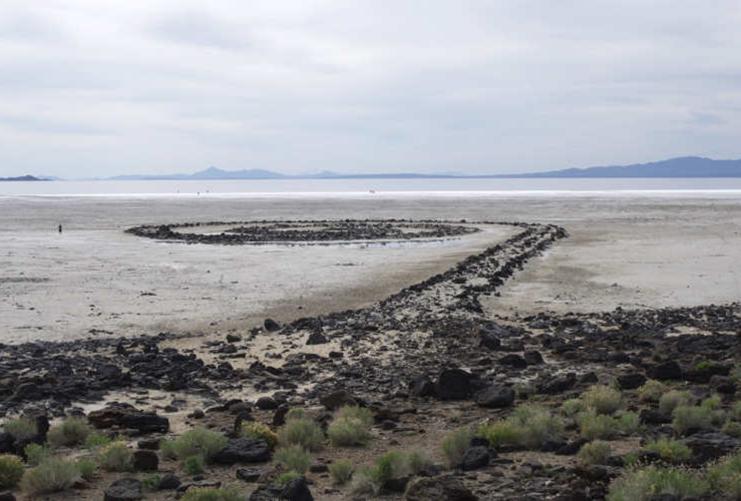
On July 20, 1973, Smithson was aboard a small airplane to document the site for a new work called Amarillo Ramp, north of Amarillo, Texas. The plane crashed, killing Smithson, pilot Gale Ray Rogers and photographer Robert E. Curtin. After his untimely death Smithson’s wife Nancy Holt, herself an artist, and others completed Amarillo Ramp the next month. Constructed to emerge from the base of an artificial lake, Amarillo Ramp now lies in a dried-up basin, its original structure altered by erosion. Overgrown with mesquite, its once-defined edges sloping into the earth, Amarillo Ramp is a solemn illustration of entropy. Continued efforts for its restoration and preservation as a ruin speak to the lasting impact of Smithson’s legacy.
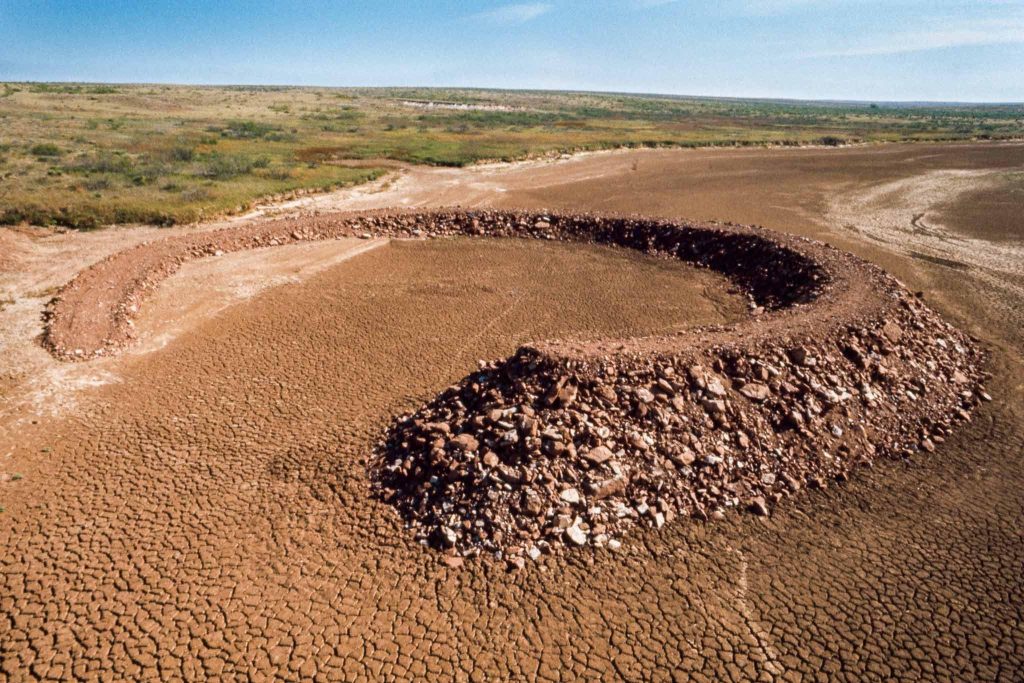
For more information and footage, watch this short video by Great Art Explained: